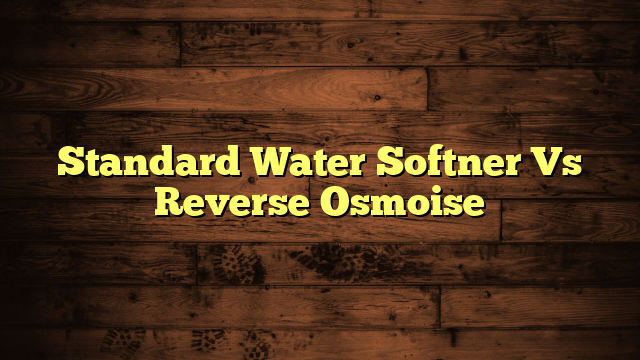What Size Water Softner Do I Need?
Imagine standing in a shower, only to be greeted by a stream of harsh, mineral-laden water that leaves your skin feeling dry and your hair dull. You might be wondering, "What size water softener do I need to combat this?" Before you invest in a softener, it's important to understand your household's water usage and hardness levels. The right size can make all the difference in water quality and efficiency, but how do you figure out what that right size is?
Key Takeaways
- Calculate total daily water usage by multiplying average consumption (60 gallons/person) by the number of household members.
- Determine water hardness level in grains per gallon (GPG) to assess softener capacity needs.
- Use the formula: Daily Water Usage x Water Hardness x 7.5 to find total grains needed per day.
- Consider peak water usage times to ensure the softener can handle demand without interruptions.
- Consult manufacturer recommendations or a professional for accurate sizing based on household needs.
Understanding Water Hardness
To appreciate the significance of choosing the right water softener, it's essential to comprehend water hardness. This term primarily refers to the concentration of dissolved minerals, particularly calcium and magnesium, found in your water supply.
These minerals influence water quality, affecting various aspects, including soap effectiveness and the longevity of plumbing fixtures. Hard water can lead to scale buildup in pipes and appliances, resulting in costly repairs and decreased efficiency.
Water hardness can be quantified in grains per gallon (GPG) or parts per million (PPM), which reflect the mineral content. In contrast, soft water contains a significantly lower concentration of these minerals, offering advantages such as better lathering with soap and reduced staining on fixtures.
Evaluating your water hardness can be done through a simple water test or by reviewing your local water quality report. Knowing your specific hardness level is crucial for determining the right size and type of water softener to meet your requirements.
Addressing water hardness not only improves your home's water quality but also provides long-term savings by reducing damage caused by hard water.
Assessing Household Water Usage
When determining the right size water softener for your home, evaluating your household water usage is essential. Understanding your water consumption patterns helps you choose a softener that meets your needs effectively.
Here are four steps to assess your household water usage:
- Identify Daily Consumption: Calculate the total water usage in your household. Consider drinking, cooking, cleaning, and bathing.
- Track Peak Usage: Determine your peak water usage times, such as mornings when everyone showers or evenings when dishes are done. This helps pinpoint maximum demands on your system.
- Consider Appliances: Account for water-consuming appliances like dishwashers and washing machines. Check their specifications for water usage to get a complete picture.
- Monitor Seasonal Variations: Be aware that water consumption can fluctuate with seasons. For instance, increased usage may occur during summer months due to gardening or filling pools.
Calculating Your Softener Size
Once you've assessed your household water usage, the next step is calculating the appropriate size of your water softener.
Begin by determining your daily water consumption, which typically averages about 60 gallons per person. Multiply this by the number of residents in your home; for instance, a family of four would use around 240 gallons daily.
The hardness of your water, usually measured in grains per gallon (gpg), is essential for the calculation. With this figure, you can find the capacity your softener needs.
Use the formula: Daily Water Usage (in gallons) x Water Hardness (in gpg) x 7.5 (to convert to grains) = Total Grains Needed Per Day.
When determining flow rate, consider peak water usage times.
Ensure your softener can handle the maximum flow rate required, which typically ranges from 5 to 20 gallons per minute (GPM).
Types of Water Softeners
Water softeners typically fall into several categories, each designed to address specific needs and preferences in households. Understanding these types helps you choose the right system for your water quality.
- Salt-Based Systems: These are the most common and effective softeners. They use ion exchange to remove hard minerals like calcium and magnesium, replacing them with sodium ions. Regular addition of salt is necessary for regeneration.
- Salt-Free Systems: Instead of removing minerals, these systems condition water to prevent scale buildup. They require lower maintenance but may not be as effective in very hard water.
- Magnetic Softeners: These systems utilize magnetic fields to alter the properties of hard water, reducing the likelihood of scale formation. They're easy to install and require no salt, though their effectiveness is often debated.
- Dual-Tank Systems: Ideal for large households, these systems ensure a continuous supply of softened water by using two tanks that alternate during the regeneration process.
Factors Affecting Water Softener Efficiency
When evaluating water softener efficiency, you'll need to take into account water hardness level, household water usage, and resin capacity requirements.
Understanding these factors allows you to select a system that meets your specific needs and guarantees peak performance.
Water Hardness Level
Understanding your water hardness level is essential for selecting an efficient water softener. The hardness of your water is primarily determined by its mineral content, specifically calcium and magnesium ions. Conducting hardness testing is necessary to assess this, as it helps you choose the right system to effectively soften your water.
Here are four key points to evaluate regarding water hardness:
- Hardness Scale: Water hardness is typically measured in grains per gallon (gpg) or parts per million (ppm). Knowing these values helps you understand your specific needs.
- Testing Methods: You can use test strips or kits available at hardware stores, or send samples to a laboratory for precise analysis.
- Local Water Supply: Research your local water supply's hardness levels, as they can vary considerably based on the source and geography.
- Impact on Appliances: Higher hardness levels can lead to scale buildup in appliances, reducing their efficiency and lifespan.
Household Water Usage
Household water usage plays an essential role in determining the appropriate size of your water softener. Assessing your daily water consumption is crucial, as this encompasses everything from cooking and cleaning to bathing and laundry. Understanding your average water usage helps gauge how much softened water you require.
Household habits significantly influence water demand. For example, running multiple appliances simultaneously increases the need for softened water. Families with children or those who enjoy long showers typically have higher water consumption, which can greatly impact the size of the water softener needed.
Tracking water usage over a week can provide valuable insights into peak times and overall consumption, helping you calculate the necessary capacity for your water softener.
A properly sized system not only enhances efficiency but also extends the lifespan of your appliances and plumbing. By analyzing your household's specific water usage and habits, you can make an informed decision that ensures optimal performance from your water softener.
Resin Capacity Requirements
Resin capacity requirements significantly impact the efficiency of your water softener. Understanding the various resin types and capacity differences is essential for selecting the right system for your needs.
Key factors to consider include:
- Water Hardness: The hardness level in your water directly influences the necessary resin capacity. Higher hardness levels demand more capacity for effective softening.
- Household Size: The number of individuals in your home affects daily water consumption. More residents typically result in increased capacity requirements.
- Peak Demand: Consider the times when your household experiences maximum water usage. High peak demand necessitates a water softener with adequate resin capacity to accommodate those periods.
- Regeneration Cycle: The frequency of regeneration plays a role in resin performance. A system that regenerates too frequently may not fully utilize its resin capacity, leading to inefficiencies.
Evaluating Your Plumbing System
Evaluating your plumbing system is vital for determining the right size water softener for your needs.
Begin by examining the pipe diameter in your home, which typically ranges from ½ inch to 1 inch for standard residential setups. The pipe diameter affects the flow rate, essential for ensuring that your water softener can process water efficiently. A larger diameter allows for a higher flow rate, enabling the system to meet your household's water demands.
Measuring your home's peak flow rate is also important, as this indicates the maximum amount of water used simultaneously.
Calculate this by adding up the flow rates of all appliances and fixtures that might be in use at the same time, such as showers, faucets, and dishwashers. This peak flow rate will help you choose a water softener that can handle your household's needs without causing a drop in water pressure.
Additionally, consider the distance between the water softener and the fixtures.
Longer distances may require a system with a higher flow rate to ensure adequate water delivery. By carefully evaluating these aspects of your plumbing system, you'll be better equipped to select the right-sized water softener.
Maintenance and Lifespan Considerations
Proper maintenance is essential for maximizing the lifespan and efficiency of your water softener.
By following a regular maintenance routine, you can ensure that your unit operates effectively and meets your lifespan expectations.
Key softener maintenance tasks to prioritize include:
- Salt Levels: Regularly checking the salt levels in the brine tank is crucial. Maintaining a salt level that's at least half-full ensures proper regeneration.
- Resin Cleaning: Periodically cleaning the resin beads helps prevent buildup. Using a resin cleaner recommended by the manufacturer can enhance performance.
- System Inspection: Routinely inspecting your water softener for leaks or corrosion is important. Addressing these issues promptly can prevent extensive damage.
- Filter Replacement: For systems with pre-filters, replacing them according to the manufacturer's guidelines is necessary. This helps maintain water quality and softener efficiency.
Benefits of Proper Sizing
Choosing the right size water softener greatly impacts its performance and your overall water quality. Properly sizing your water softener ensures it operates within its ideal range, leading to improved efficiency.
An appropriately sized unit regenerates water more effectively, removing hardness minerals without wasting resources. A water softener that's too small may struggle to soften water during peak usage times, resulting in hard water issues that can affect appliances, plumbing, and even skin.
On the other hand, an oversized system can cause unnecessary salt and water usage during regeneration, ultimately increasing utility bills.
Proper sizing contributes to significant cost savings. By avoiding overuse and ensuring that your water softener runs efficiently, you reduce the frequency of salt refills and minimize water consumption during regeneration cycles.
This not only lowers expenses but also reduces the environmental impact of excessive salt discharge.
Frequently Asked Questions
Can I Install a Water Softener Myself?
Yes, you can install a water softener yourself. DIY installation offers cost savings, but make certain you follow the manufacturer's instructions carefully. Check local plumbing codes and have the right tools ready for a successful setup.
How Long Does a Water Softener Last?
Like a well-tended garden, your water softener's lifespan typically ranges from 10 to 15 years. Regular maintenance tips, such as cleaning and checking salt levels, can help maximize its efficiency and longevity.
What Salt Do I Use in a Water Softener?
When choosing salt types for your water softener, opt for solar salt or evaporated salt for peak performance. Regular softener maintenance guarantees efficiency, so check and refill the salt levels to keep your system running smoothly.
Can Water Softeners Remove Iron From Water?
Wondering if your water softener can tackle iron? While many units excel in softening, not all remove iron effectively. Consider models with integrated iron filtration to enhance your water quality and eliminate pesky iron stains.
Do Water Softeners Waste Water During Regeneration?
Yes, water softeners do waste water during the regeneration process. Typically, they use about 2 to 15 gallons per regeneration cycle, depending on the unit's size and efficiency, so consider this when evaluating your needs.
Conclusion
Choosing the right size water softener is like finding the perfect key for a lock; it opens the door to cleaner water and lower maintenance costs. By understanding your water hardness and daily usage, you guarantee your system can handle peak demands, much like a well-tuned engine powers a vehicle. Proper sizing not only enhances efficiency but also prolongs your softener's lifespan, so you can enjoy the benefits of softened water without interruption. Invest wisely, and reap the rewards.







